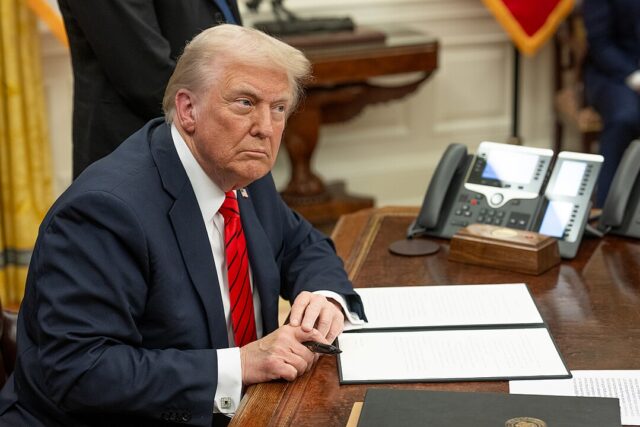
The Trump administration has launched detailed planning for a bold new mission to send American troops and intelligence officers into Mexico to dismantle violent drug cartels, according to two current U.S. officials and two former senior officials familiar with the effort.
Initial training for this potential operation — which would include ground operations inside Mexico — is already underway, though a full deployment is not, at this moment, imminent. The officials say the scope is still being debated and no final decision has been made.
Under the proposed plan, U.S. troops — many drawn from the elite Joint Special Operations Command (JSOC) — would operate under Title 50 status (the U.S. intelligence framework) and coordinate with officers from the Central Intelligence Agency.
This would mark a sharp departure from previous administrations, which generally confined U.S. efforts in Mexico to support roles (advising local police or army units) rather than direct action. The new approach signals that the Trump team views cartels as an insurgent threat to U.S. national security — not simply a law-enforcement challenge.
If green-lit, the mission is expected to remain largely covert, without public fanfare. The administration is framing this as part of an “all-of-government” approach to protect American communities from cartel violence and drug flows.
Key to the plan will be drone strikes targeting drug laboratories and cartel leadership. Some of these drones require operators on the ground, hence the need for special forces and intelligence personnel inside Mexico.
This push builds off an earlier move: the State Department designated six Mexican cartels — along with MS‑13 and the Venezuelan gang Tren de Aragua — as Foreign Terrorist Organizations. That step unlocked sweeping legal authorities for U.S. spy agencies and military units to go after their networks.
Furthermore, President Trump has publicly acknowledged authorizing covert CIA action inside Venezuela and has signaled that land-based strikes on cartel targets could follow.
The reported move into Mexico thus reflects a two-front strategy: continuing pressure on Venezuela-based narcotics networks while now looking to tackle the land routes and infrastructure of cartels operating in North America. According to the officials, both the intelligence community and military assess that the “hemisphere war” on narco-terror must intensify — and that the U.S. has both the sovereign interest and legal authorities to act.
Context on the Venezuela Campaign
Here are some of the key developments and background on the recent Trump administration effort against drug trafficking and narcoterrorism in Venezuela.
- In early September 2025, U.S. forces struck a vessel off the coast of Venezuela carrying illegal narcotics. The administration described the target as operated by a designated narco-terrorist organization.
- In October 2025, President Trump announced that another strike resulted in six “narcoterrorists” killed aboard a boat allegedly trafficking drugs from Venezuela toward the U.S.
- The administration formally told Congress that the U.S. is now in a “non-international armed conflict” with certain drug cartel organizations, marking a shift in legal posture from purely interdiction to armed confrontation.
- The region’s deployment has included U.S. Navy warships in the Caribbean and Eastern Pacific, paired with surveillance platforms and special operations forces.
- The Trump team argues this is justified by the scale of the drug-flow threat: ships carrying huge loads of narcotics destined for U.S. streets and deaths — making the fight one of national security, not just crime-control.
- On the flip side, critics argue there are serious legal, sovereignty and human-rights concerns: whether strikes in international waters or even near foreign shores are consistent with U.S. and international law when the targets are suspected smugglers rather than declared enemy combatants.






Need Base for Ops inside Country
Mexico Govt OK
Naval presence
Beef up bases in TX AZ NM on southside
minimum
Trump has to fight the lying Demonocrats, RINOs, AND the drug cartels. WHAT A JOB !